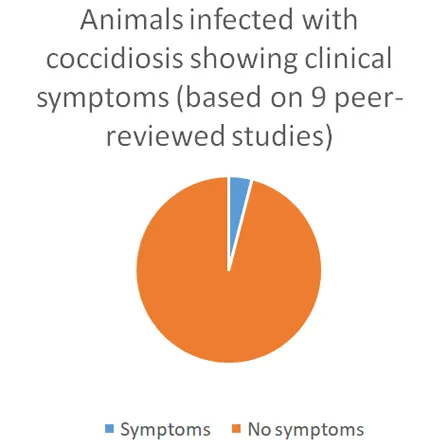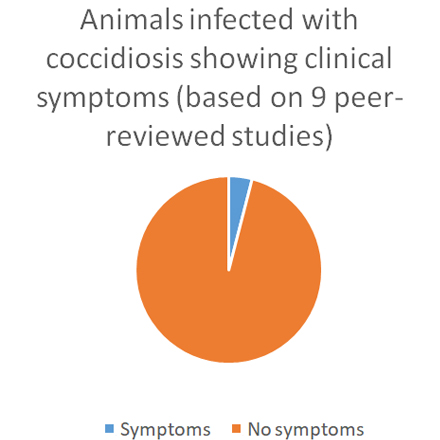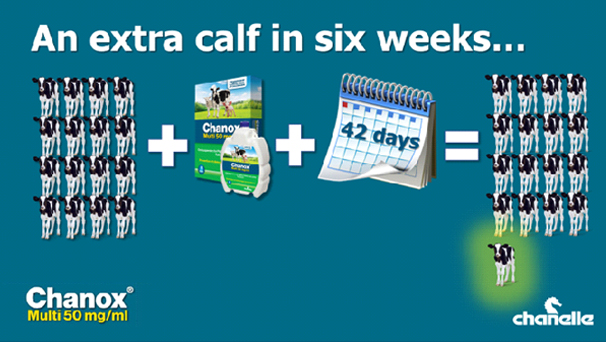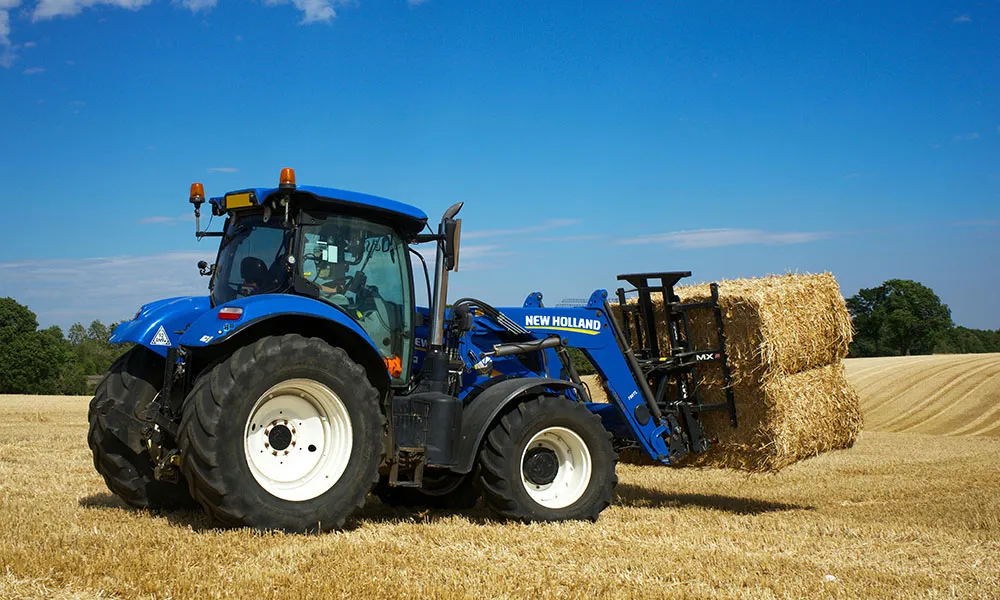
What is it?
Coccidiosis is a disease caused by microscopic organisms called protozoa, which are typically numerous in livestock environments. Animals readily consume coccidia eggs when grazing or simply exploring their surroundings.
How does coccidiosis affect my animal?
Ingested coccidia eggs (oocysts) pass through the digestive system, multiply and penetrate cells in the gut lining. Within these cells the organisms develop further, eventually causing cells to burst and release thousands more oocysts. The ‘bursting’ of these cells leads to the breakdown of the delicate gut lining. The process can repeat multiple times and within two weeks the parasites will have multiplied up to a million-fold. The released eggs pass out in the animal’s dung and the cycle begins again. As it is responsible for nutrient absorption in our animal, a compromised gut can lead to significant production losses in our animal and in some cases even death.
What will I see?
Clinical symptoms of coccidiosis include:
- Bloody/black diarrhoea
- Straining
- Fluid loss
- Anaemia
- Lethargic animals
- Lack of appetite
- Fever/other ailments
- Death
The real problem - what you don’t see…
All ruminants (namely cattle and sheep) kept under conventional conditions unavoidably experience infection with coccidia at some point.

However, the percentage of animals in an infected group with clinical symptoms is typically low and often zero. Diseases that negatively affect our animal without pronounced symptoms are deemed ‘sub-clinical’.
A bigger problem?
Subclinical coccidiosis can be more economically damaging to a farm than clinical cases as there may be no obvious signs of infection, yet performance will have reduced. In nine peer-reviewed scientific studies that detected high burdens of coccidia eggs in calf and lamb faecal samples, only 4% of animals showed clinical symptoms of coccidiosis.
The solution
Anti-coccidials (e.g. Chanox) are agents that disrupt the coccidia life-cycle. Administered at the correct time, they reduce both potential damage to the animal’s gut and contamination of the animal’s environment. Live weights were monitored in seven of the studies highlighted in figure 1, and during the experiments half of the animals were treated with an anti-coccidial. In all of the studies, animals treated with anti-coccidials grew faster than non-treated animals during trial. The growth increase ranged from 7% to 33%. Average performance increase was 19% across the studies. Trial period averaged 42 days.
An extra calf in six weeks
Based on this, in a group of 16 calves with a starting weight of 55kg, using an anti-coccidial leads to increased weight gains equivalent to an extra calf in just 42 days.

Protecting young animals pays
The greatest feed efficiency in cattle and sheep is achieved in early life, so this is the point in the production system at which maximum return on feed investment will be gained. In dairy heifers, growth in the first six months of life has a significant effect on the ability to hit subsequent breeding and fertility targets. Indeed, research has shown that treatment with an anti-coccidial in early life has a positive effect on dairy heifers, increasing conception rates and reducing age at first service. These are crucial variables for maximising lifetime profitability.
When to use Chanox?
Administer Chanox within a fortnight of them entering a risk environment (e.g. turnout/rearing shed). Ideally between 10-14 days of movement. Alternatively, look at your own farm’s history – when did animals develop coccidiosis symptoms in the past? Treat around one week in advance of expected symptoms.
Why at this time?
Chanox disrupts the parasite’s development, a process which takes around 21 days. When we treat animals during this development phase we afford the animal a window of protection and a chance to build up their own immunity to the parasite. By the time we are experience the classical symptoms of coccidiosis, the damage has been done to our animal’s intestinal lining.
Other measures to kick out coccidia
- Avoid soiled, wet bedding
- Raise water troughs off the ground where possible
- Clip cows’ tails pre-calving
- Use disinfectant that are licenced to kill oocysts
- Treat animals kept in high stocking density-situations
- There is evidence to show that external stressors such as weaning, dehorning or transportation can also increase the risk of clinical symptoms developing.
Improving overall hygiene, spacing out stressor events as much as possible and the use of Chanox at strategic times will help to prevent coccidiosis from affecting your animals’ performance and profitability. Dosage rates of Chanox Lamb: 0.4ml/kg body weight Calf: 3ml/10kg weight Route of administration Oral drench Withdrawal periods (meat) Sheep 42 days Calves 63 days [embed]https://www.youtube.com/watch?v=3vufAdsxJiw[/embed] Written by guest Writer Ciarán Lenehan (BAgr.Sc, MAgr.Sc) Technical Specialist – Chanelle Veterinary










